The Darkest Chapter in Human History
Two weeks and 73 years ago, the German war machine seemed indestructible.
Nazi tanks were advancing through southern Russia and chewing up the Soviet army. Rommell had crossed the Egyptian border and the British army appeared to be defeated. U-Boats were sinking allies ships in the Atlantic at a furious rate.
At 10 a.m. on 22 July 1942, SS-und Polizeiführer Warschau Ferdinand v. Sammern-Frankenegg, Dr Ludwig Hahn and SS-Sturmbannführer Hermann Höfle marched into the Jewish Order Service (Police) office in Warsaw, Poland, and announced the "Great Resettlement Action". It marked what is probably the lowest possible point in human history.
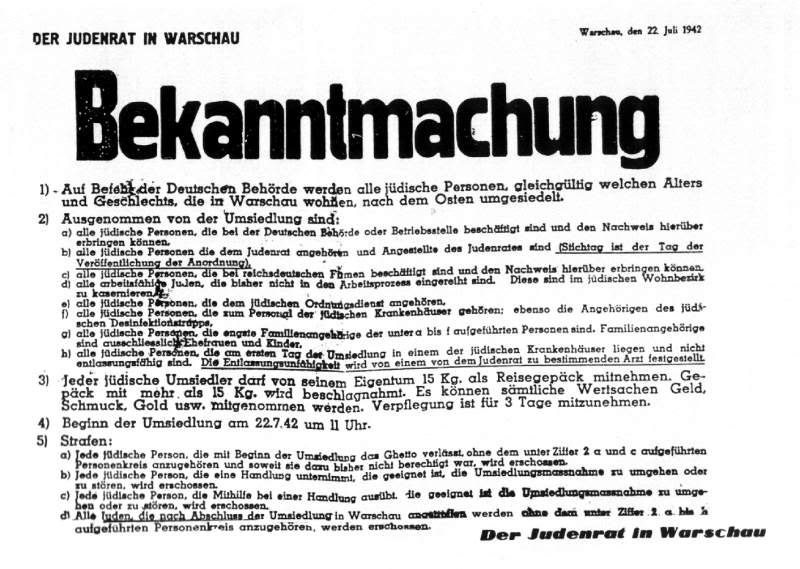
The idea was simple - 300,000 men, women, and children were to be sent to Treblinka, and their deaths, for the crime of being Jewish.
July 22nd was already an infamous day in Jewish history. On that day in 1648 10,000 Jews in Polannoe, Ukraine, were massacred by Cossacks because of their crime of ethnicity and religion.
But that was then. In 1942 the Germans announced that they were to be sent to labor camps.
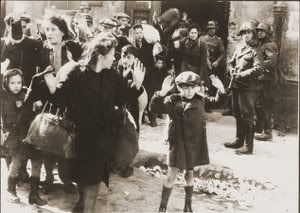
The Judenrat (Jewish Police) were responsible for delivering 6,000 persons daily at 4pm to the Jewish hospital at Stawki Street, the assembly point. The Judenrat had good reason to cooperate with the Germans: if they cooperated their families would not be deported. If they didn't cooperate their families would be transported to make up the difference.
Before a week was out members of the Judenrat were deserting in droves.
There was only one punishment to speak of:
*Each Jew who is leaving the ghetto during the resettlement action will be shot.
*Each Jew who is acting against the resettlement will be shot.
*Each Jew who doesn't belong to the above-mentioned persons and who will be discovered in Warsaw after the resettlement action will be shot.
*If these orders will not be carried out, a corresponding number of hostages will be shot.
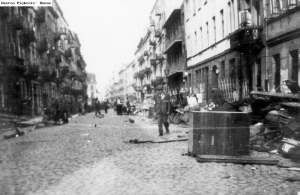
The following day the Jewish underground met, but refused to authorize resistence actions.
The same day SS-Hauptsturmführer Worthoff ordered the Judenrat to provide 10,000 jews, including children for a children's transport, for the 24th of July. The Judenrat leader Adam Czerniakow committed suicide.
It is estimated that 10,000 people were simply shot in the streets and the houses in the order of "cleaning" the buildings.

On August 6th, the Janusz Korczak orphanage was closed. 192 children and 10 adults were marched through the streets to the assembly point. As they crossed the Chlodna Street bridge some Poles below called out, "Goodbye, good riddance, Jews!"
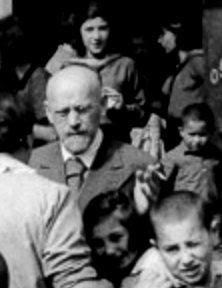
Around the same time the Underground sent an agent, Zalman Friedrich, to find out what was happening to the transports. On Sokolów Podlaski market, near Treblinka, Friedrich met two naked Jews who had escaped from Treblinka. They described what had happend to the deportees. He returned to the Warsaw Ghetto in late August 1942, just in time to see the last part of the first round of expulsions. Only 60,000 jews remained in the ghetto.
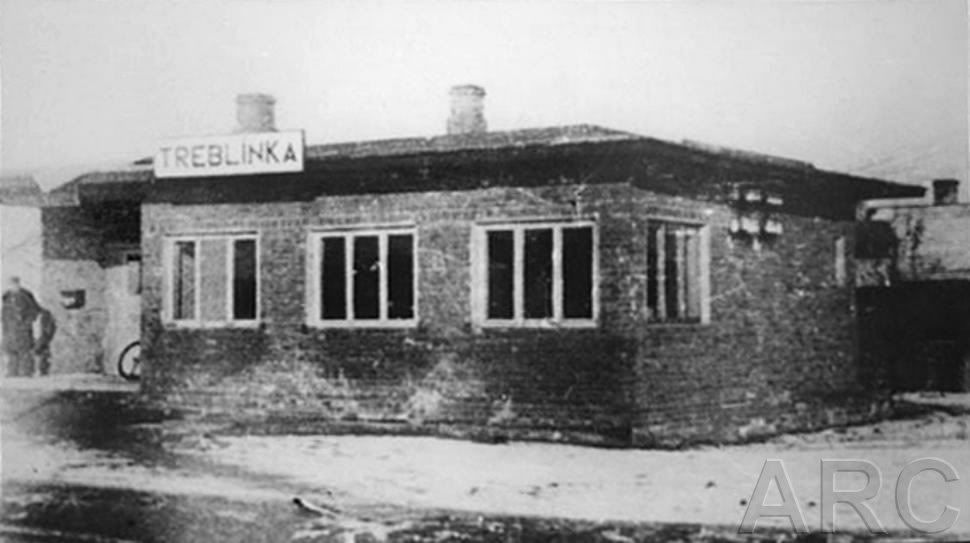
Mass Slaughter
While the expulsions from the Warsaw Ghetto had happened with brutal and bloody effeciency, the same could not be said for Treblinka. The camp was in chaos. The gas chambers were simply too small to handle the enormous number of victims.
The camp was operated by 20-25 SS (Germans and Austrians) and 80-120 Ukrainian guards.
When a train arrived the passengers were stripped of their clothes. Then the men were seperated and forced to run uphill through the "funnel" directly into the gas chamber, all the while being whipped by the guards. Making them run also raised their heartbeat, which made the process go faster.
The problem was the women and children.
Not having enough gas chamber space, they were left standing naked outside the gas chamber where they could hear the screams of the men dying inside. Pandamonium often set in. The camp commander SS-Obersturmführer Irmfried Eberl, was fired and replaced by SS-Obersturmführer Franz Stangl, the former commander of the Sobibor death camp.
The work was performed by 700-800 Jewish prisoners. Besides the upkeep of the camp, the disposal of the bodies, the extraction of money and gold fillings, the prisoners had to camouflage the camp. Beatings were common, and deadly. "There was a bruise rule; if a prisoner had been bruised on the face, he would be shot that evening at roll call, or the next morning if the bruise had begun to show." Work crews were normally replaced every three to five days.
Uprising
On January 18, 1943, shortly before the German Army at Stalingrad surrendered, the Nazis started the 2nd and final round of explusions from the Warsaw Ghetto.
However, this time it didn't go so easily. After four days of fierce resistence, the Nazis withdrew to regrouped. The next three months in the ghetto were spent building bunkers. On the eve of Passover, April 19th, the final assualt started. The Nazis committed over 2,000 troops to the assualt, with the main battle lasting until the 23rd. However, some resistence continued until May 16. The Polish Resistence smuggled in arms and offered token assistence.
The final German report stated:
180 Jews, bandits, and subhumans were destroyed. The former Jewish quarter of Warsaw is no longer in existence. The large-scale action was terminated at 2015 hours by blowing up the Warsaw Synagogue.
Total number of Jews dealt with 56,065, including both Jews caught and Jews whose extermination can be proved.
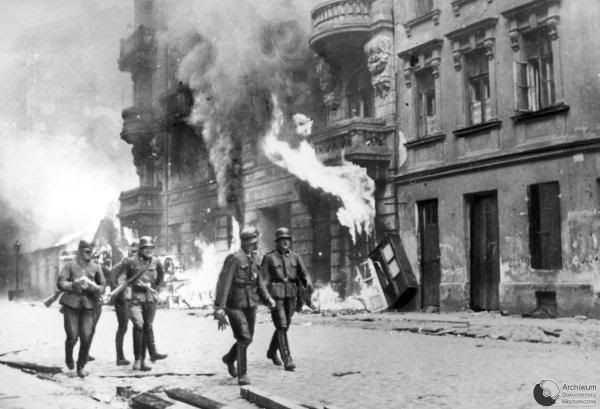
Uprising Part II
The Warsaw Ghetto Uprising is very famous, and you've probably heard about it already. What you probably haven't heard about is what followed.
Most of the Jews captured in the final battle of the Warsaw Ghetto were also sent to Treblinka. Some of the weapons used in the following Treblinka uprising were literally smuggled in by captured resistence fighters of the Warsaw Ghetto. Dr Chorazycki, Leon Huberman, Kurland, Markus, and Sydowicz, all from Warsaw, were some of the principle leaders.
After the date of the uprising was aborted several times, on August 2nd, 1943, it happened.
Punctually at 4 p.m. all groups are informed that they have to go to the garage for weapons, which are distributed by Rudek. A person arriving gives the password "Death"; the countersign is "Life". The passwords are given feverishly. At the same time the main murderers are attacked, the phone line is cut and the watchtowers set ablaze. Cpt. Zielo attacks two SS men with an axe, and is taking command. Close by the garage stands the armoured car, which has been immobilized by Rudek. Now we are seeking some cover from where it is possible to shoot at the Germans. Sturmführer Kurt Seidel was killed from there, as well as other Nazis. The Sydowicz group captures the armoury. We already have 200 people with weapons. Others attack the Germans with axes and shovels. Commandant Zielo is giving orders and is rousing everybody to fight. Everybody is full of feelings of revenge.
We capture new weapons and machine guns. Rudolf Masaryk is located on the roof and is shooting at the frightened Germans. Among the sound of the shots we hear his voice: "This is for my wife and my child who never saw the world!"
The gas chambers, "bath", fictitious railway station with the plaques Bialystok-Wolkowysk, "cash-desk", "waiting-room" etc are set on fire. The army barracks are also ablaze. The flames and the sound of shots alarms the Germans, who are arriving from every side; SS men and Gendarmes from Kosow, soldiers from the neighbouring airfield, and even a special unit of SS from Warsaw. It is a regular battle. Cpt. Zielo is running from one group to another among the flames and is rousing everyone to the fight. He gives short, soldierly orders until he is killed by Nazi bullets.
Treblinka was about 50% destroyed in the uprising. Of the 1,000 prisoners who engaged in the uprising only about 60 survived until the end of the war. While the gas chambers were not actually destroyed in the uprising, the camp was effectively unworkable. Therefore the prisoners who failed to escape were used to destroy what remained of the camp a month later, and then they were shipped off to the Sobibor death camp.
Uprising Part III
Sobibor was a lesser known death camp, also in Poland. Around the time of the Treblinka Uprising a resistence group was formed in Sorbibor. Captured jewish members of the Red Army bolstered the ranks of the resistence. The leader was Alexander (Sasha) Aronowich Pechersky.
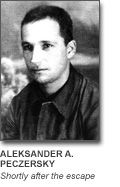
On October 14, 1943, the revolt started.
On 14 October 1943 Reichleitner, Wagner and Gomerski were on leave. The absence of Wagner and Gomerski, two of the cruellest SS men in Sobibor, seriously weakened the guard garrison.
At about 4 p.m. deputy commander Johann Niemann visited the tailor's shop to try on a new uniform. There he was killed by Yehuda Lerner with a blow from an axe. The revolt had begun - there was no turning back.
Ten Germans, two Volksdeutsche and eight Ukrainian guards were killed, SS-Oberscharführer Werner Dubois was seriously injured.
Most of the 700 prisoners were not part of the resistence, and therefore were taken by surprise by it.
Some Jews were returning to their barracks where they pulled out their white prayer shawls from their hiding places and came out assembling near the kitchen reciting "Kaddish"; the prayer for the dead, for themselves.
Sasha, jumping up on a table, made a short speech in Russian, his native language. His voice was clear and loud so that everybody could hear, but also composed and slow. He told the prisoners that most of the Germans in the camp had been killed. There was no turning back. A terrible war was ravaging the world and each prisoner was part of that struggle. He promised that dead or alive, they would be avenged and so would the tragedy of all humanity. He repeated twice that those prisoners who, by some miracle survive, should forever be a witness to this crime. He ended with a call: "Forward Comrades! Death for the fascist!!!"
Only about 300 made it out of the camp. About 50 survived the war. All who remained were executed the following day.
I didn't write this diary because a large part of my family died in Auschwitz.
I didn't write this diary because of some obsession with the Holocaust.
I wrote this diary not because of the memory of those who died, but in the memory of those who fought back against all odds.
I wrote this diary for those who stayed behind in Treblinka and Sobibor for a few extra minutes so that they could burn the gas chambers and guard barracks, and in so doing sacrificed their lives so that others might live.
I wrote this diary because these people didn't fight for a flag or a nation, but for their fellow man. Whoever that fellow man might be.
I wrote this diary for the resistence fighters everywhere who fight, not for hate or malice, because they know it is the right thing to do.


Comments
this was one of my first diaries
on DKos, 9 years ago
This was a tough read
Excellent diary and very relevant today and in the future. Your editorial comment at the end is awesome!, particularly this:
Do I hear the sound of guillotines being constructed?
“Those who make peaceful revolution impossible will make violent revolution inevitable." ~ President John F. Kennedy